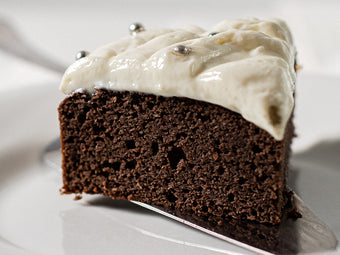Fibre Takes The Spotlight For Fibre February
By Gemma Shorter, BSc, MSc, ANutr - Nutritionist
Currently, in the UK we (adults aged 16 or over) are recommended to consume 30g of fibre a day (11-16-year-olds = 25g, 5-11-year-olds = 20g, 2-5-year-olds = 15g) to help reduce the risk of cardio-metabolic diseases such as cardiovascular disease, diabetes, obesity and colorectal cancer. However, according to the National Diet and Nutrition Survey, we are only consuming around 15-21g a day.

What is fibre?
Fibre is a term used to describe a type of carbohydrate found in plants that cannot be digested in the small intestine. Instead, it passes down to the large intestine where it is broken down by bacteria.
There are lots of different types of fibre such as cellulose, inulin, lignin, beta-glucans, pectin, psyllium and resistant starch. Fibres are divided into two groups; insoluble and soluble, which both promote a healthy digestion. Most foods contain both types but are often richer in one or the other.
Insoluble fibre passes through the gut without being broken down and adds bulk to stools, helping food move through the digestive system more quickly. In comparison, soluble fibre absorbs water in the gut to form a gel-like substance which helps to slow digestion.

Why do we need fibre?
Fibre helps to keep the digestive system healthy and prevent problems such as constipation and diarrhoea. It acts as a prebiotic by feeding the good bacteria in the gut. These bacteria are responsible for regulating hormones, producing short chain fatty acids and boosting the immune system. The gut and the immune system are very closely linked, with the gut wall being home to 70% of the immune cells.
Soluble fibre found in oats, known as beta glucan, has been shown to lower the levels of LDL or ‘bad’ cholesterol in the body. It attaches to the cholesterol particles in the small intestine which prevents them from entering the bloodstream and instead they are removed through the faeces. Reducing the levels of LDL cholesterol helps to lower the risk of cardiovascular disease.
Fibre helps reduce the risk of developing diabetes or assists those with diabetes in managing their condition. It can also help you control your weight, as foods rich in fibre are filling and usually have a lower glycaemic index (a scale for how quickly a food raises blood glucose levels), which helps slow digestion, lowers appetite and reduces spikes in blood glucose levels.
Fibre has also been shown to lower the risk of developing colorectal cancer. Colorectal cancer starts in the colon or the rectum and is the third most common type of cancer worldwide. Evidence suggests that environmental factors such as diet are of major importance. By increasing stool bulk, diluting faecal carcinogens and decreasing transit time, fibre helps to reduce the contact between carcinogens and the lining of the colorectum. Interestingly, fibre found in cereals and wholegrains are thought to have more of an effect than fibre found in fruit, vegetables and legumes.

Which foods are rich in fibre?
Fibre is found in most plant foods including:
- Vegetables such as carrots, broccoli and potatoes (skins)
- Fruits such as apples, bananas and berries
- Legumes like beans, lentils and peas
- Wholegrains like bread, pasta, rice and breakfast cereals
- Different grains like oats, barley, rye
- Nuts and seeds like almonds and sunflower seeds
- Foods that contain inulin such as garlic, artichokes and asparagus
- Psyllium extracted from plant ago ovato which is added to increase the fibre content in foods such as the entire Lo-Dough product range
How can we increase our fibre intake?
Now you know what fibre is, why it is good for you and which foods are the best sources, here are some ways you can increase the fibre in your diet:
- Try to eat your 5 (or 7) fruit and veg a day by adding more veg to your meals and snacking on fruit
- Add beans and lentils to stews, curries, soups and salads
- Swap white bread, pasta and rice for wholegrain versions
- Eat potatoes with their skins on
- Snack on fruit, oat or wholegrain crackers, houmous, nuts and seeds
- Choose a high-fibre, wholegrain breakfast cereal such as porridge, muesli, bran flakes and wholewheat biscuit cereal
- Top yoghurt, breakfast cereals and salads with nuts and seeds
- Incorporate Lo-Dough into your diet!
If you are feeding a child that is under 2 years old please bear in mind that you are not recommended to only give wholegrain starchy foods to under 2’s. Due to whole-grains being high in fibre, they may fill your child up before they have taken in the calories or nutrients they need. After the age of 2, you can gradually introduce more wholegrain foods.
Please also note that if you are suffering from a digestive disorder such as Irritable Bowel Syndrome, you may need to modify your fibre intake. If you need further guidance, please speak to your doctor.











